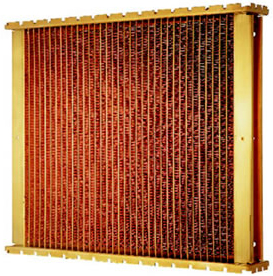Nanofluids to be used to make new types of cameras, microdevices, and displays
 Washington, Feb 20 : A new study by researchers has demonstrated that liquids embedded with nanoparticles show enhanced performance and stability when exposed to electric fields, which could lead to new types of miniature camera lenses, cell phone displays, and other microscale fluidic devices.
Washington, Feb 20 : A new study by researchers has demonstrated that liquids embedded with nanoparticles show enhanced performance and stability when exposed to electric fields, which could lead to new types of miniature camera lenses, cell phone displays, and other microscale fluidic devices.
“This study may open up a new vista for using nanofluids in microscale and nanoscale actuator device applications,” said Theodorian Borca-Tasciuc, a professor of mechanical engineering at Rensselaer, who led the research project.
The manipulation of small volumes of liquid is critical for fluidic digital display devices, optical devices, and microelectromechanical systems (MEMS) such as lab-on-chip analysis systems.
Most research into such systems has been conducted with regular liquids, but not nanofluids, which are liquids embedded with different nanoparticles. Nanofluids have been shown to exhibit some attractive properties, including enhanced heat transfer and capillary properties, as compared with regular, or pure, liquids.
Borca-Tasciuc’s team placed droplets of water-based solutions containing bismuth telluride nanoparticles onto a Teflon-coated silicon wafer. When an electric field was applied to the droplet, the researchers observed a strong change in the angle at which the droplet contacted the wafer. This change was much higher than that observed in liquids without the nanoparticles when tested under the same conditions.
“You use the same electrical field, but you get more change in shape with the nanofluid. We know the nanoparticles are critical in this process because without them the effect is much less strong,” said Borca-Tasciuc.
The ability to easily change the contact angle of droplets of nanofluids has potential applications for efficiently moving liquids in microsystems, creating new methods of focusing lenses in miniature cameras, or cooling computer chips. (ANI)